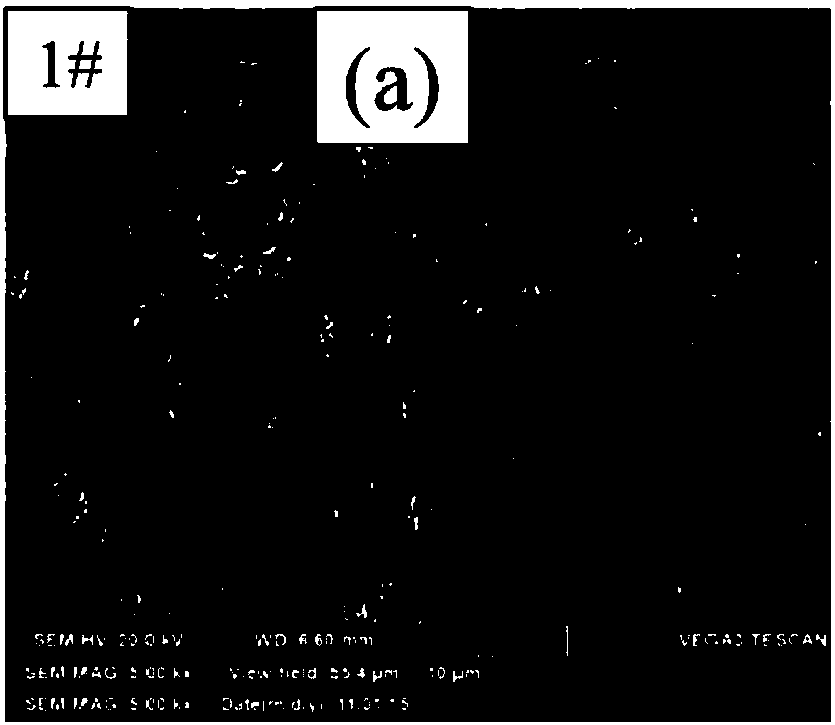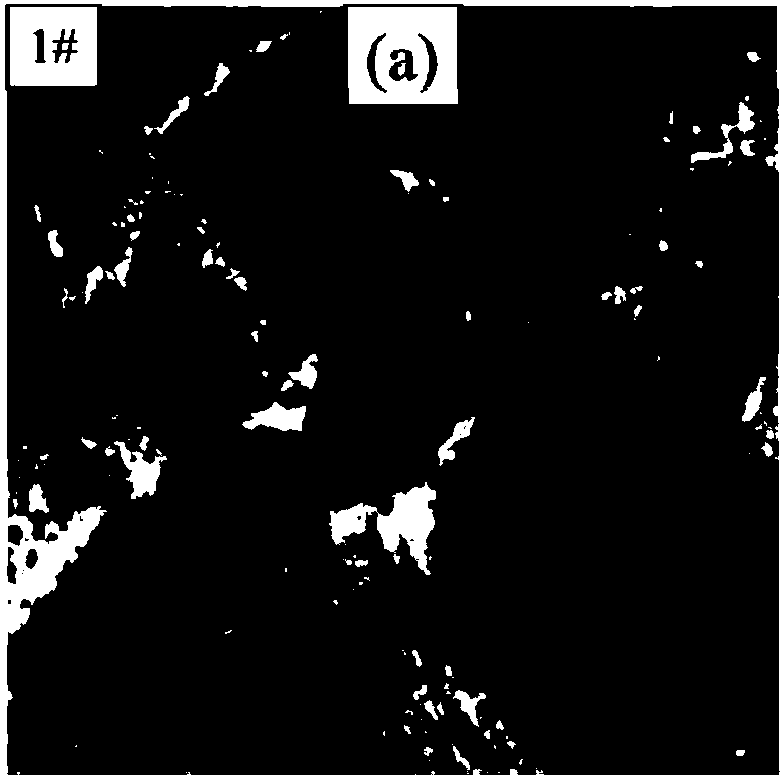Ultra-low-carbon cryogenic steel and heat treatment technique thereof
A low-temperature steel and ultra-low carbon technology, applied in the field of low-temperature steel, can solve the problems of low strength, poor plasticity, low strength and toughness, etc., and achieve the effects of improving low-temperature toughness, improving weldability, and improving toughness.
- Summary
- Abstract
- Description
- Claims
- Application Information
AI Technical Summary
Problems solved by technology
Method used
Image
Examples
Embodiment 1
[0049] According to the ratio, the raw materials containing various element components are mixed and cast into steel ingots. Each component is composed of the following elements in mass percentage: C: 0.008-0.01%; Ni: 1.5-2.5%; Mn: 6.0-8.0%; Al: 1.5-2.0%; Cu: 1.5-2.5%; P: ≤0.005%; S: ≤0.003%; N: 0.005-0.008%; O: 0.0005-0.002%; the balance is Fe. Derust and degrease the steel ingot and clean it to avoid uneven stress during heat treatment.
[0050] The steel ingot is subjected to multi-step hot rolling from the initial rolling temperature of 1200°C to the final rolling temperature of 750°C and then air-cooled. The rate is 25%, 25%, 25% respectively, and the holding time is 120, 70, 25 minutes respectively. Then, the steel ingot is subjected to cold rolling treatment at 25° C., and the reduction rate of the cold rolling treatment is 60-75%.
[0051] The cold-rolled steel ingot is kept at 50-70° C. above the A1 temperature for 1-2 hours, and then water-cooled to room temperatur...
Embodiment 2
[0053] According to the ratio, the raw materials containing various element components are mixed and cast into steel ingots. Each component is composed of the following elements by mass percentage: C: 0.008-0.01%; Ni: 1.5-4.5%; Mn: 6.0-12.0%; Al: 1.0-3.0%; Cu: 1.0-3.0%; P: ≤0.005%; S: ≤0.003%; N: 0.005-0.008%; O: 0.0005-0.002%; the balance is Fe. Derust and degrease the steel ingot and clean it to avoid uneven stress during heat treatment.
[0054] The steel ingot is subjected to multi-step hot rolling from the initial rolling temperature of 1200°C to the final rolling temperature of 750°C and then air-cooled. The amount is respectively 30%, 25%, 25%, and the holding time is respectively 115, 65, 20 minutes. Then, the steel ingot is subjected to cold rolling treatment at 25° C., and the reduction of the cold rolling treatment is 55-80%.
[0055] The cold-rolled steel ingot is kept at 50-100° C. above the A1 temperature for 0.5-2 hours, and then water-cooled to room temperatu...
Embodiment 3
[0057] According to the ratio, the raw materials containing various element components are mixed and cast into steel ingots. Each component is composed of the following elements by mass percentage: C: 0.008-0.01%; Ni: 1.5-4.5%; Mn: 6.0-12.0%; Al: 1.0-3.0%; Cu: 1.0-3.0%; P: ≤0.005%; S: ≤0.003%; N: 0.005-0.008%; O: 0.0005-0.002%; the balance is Fe. Derust and degrease the steel ingot and clean it to avoid uneven stress during heat treatment.
[0058] The steel ingot is subjected to multi-step hot rolling from the initial rolling temperature of 1200°C to the final rolling temperature of 750°C and then air-cooled. The amount is respectively 20%, 25%, 25%, and the holding time is respectively 125, 75, 30 minutes. Then, the steel ingot is subjected to cold rolling treatment at 25° C., and the reduction of the cold rolling treatment is 55-80%.
[0059] The cold-rolled steel ingot is kept at 50-100° C. above the A1 temperature for 0.5-2 hours, and then water-cooled to room temperatu...
PUM
| Property | Measurement | Unit |
|---|---|---|
| tensile strength | aaaaa | aaaaa |
| yield strength | aaaaa | aaaaa |
| elongation | aaaaa | aaaaa |
Abstract
Description
Claims
Application Information
 Login to View More
Login to View More - R&D
- Intellectual Property
- Life Sciences
- Materials
- Tech Scout
- Unparalleled Data Quality
- Higher Quality Content
- 60% Fewer Hallucinations
Browse by: Latest US Patents, China's latest patents, Technical Efficacy Thesaurus, Application Domain, Technology Topic, Popular Technical Reports.
© 2025 PatSnap. All rights reserved.Legal|Privacy policy|Modern Slavery Act Transparency Statement|Sitemap|About US| Contact US: help@patsnap.com



